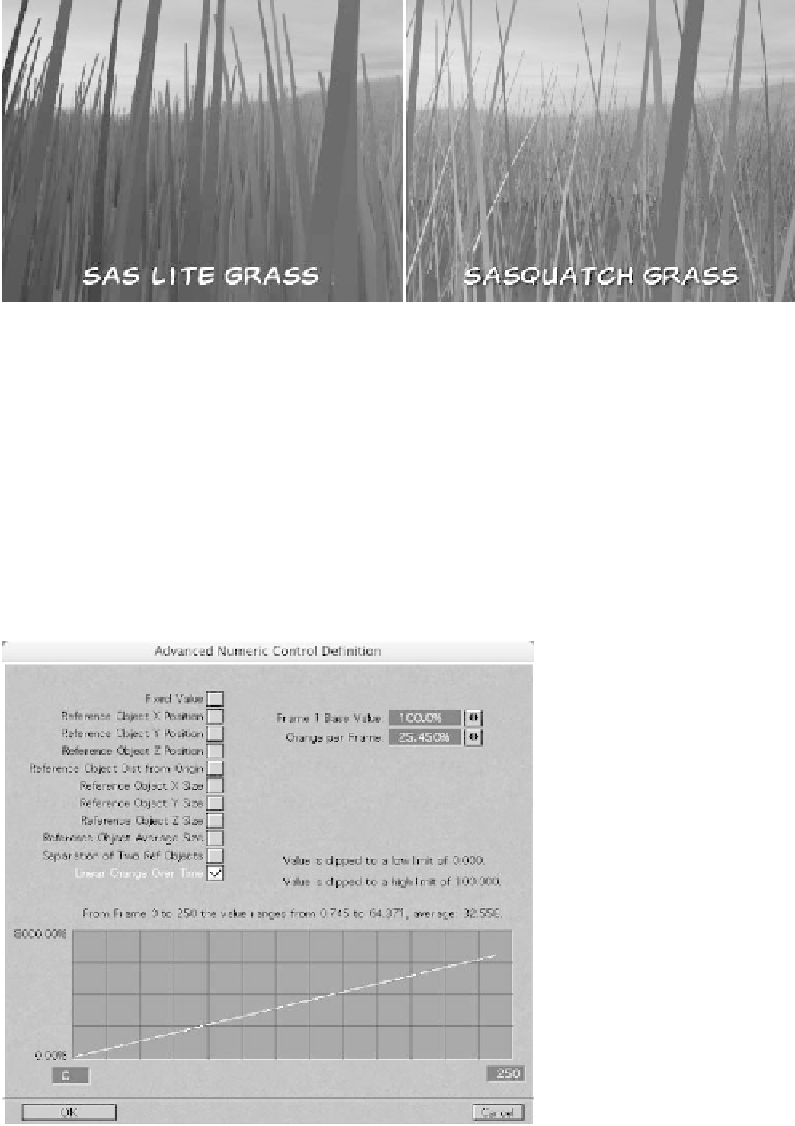Graphics Programs Reference
In-Depth Information
Figure 20-83: SasLite grass vs. Sasquatch grass.
Perhaps the biggest thing that Sasquatch
can do but SasLite cannot is animation.
With SasLite, the fibers are the fibers.
They don't respond to anything, and they
don't change over time.
With Sasquatch, not only can they
respond to wind, movement, and so on, but
length and density can be independently
animated. You can, quite literally, make
fibers grow before your eyes.
The differences in color are also enor-
mous. In SasLite, as you know, the only
variation in color possible is a single con-
trol, which randomly changes both the
brightness and hue within a percentage
range.
In Sasquatch, not only are those two
things separated into two different ranges
(one for each), but you also pick a “Salt”
and a “Pepper” fiber, each of which has a
different base and tip color
(that's two colors per fiber,
for every fiber). You pick
how close to the tip the
change occurs and how
sharp the division is. Then
you decide the percentage
of “Salt” fibers, and the
percentage of blend
between “Salt” and “Pep-
per.” (Is each fiber either
black or white, for instance,
or are there some that are
gray?)
In addition, you can
decide if the fibers inherit
the dominant color from
the clump they are in, if
they keep their own color,
or if they have some per-
centage of both.
Figure 20-84: Animating properties panel in Sasquatch.





